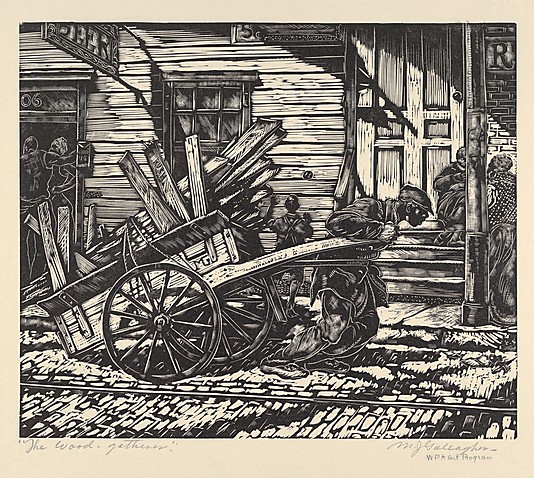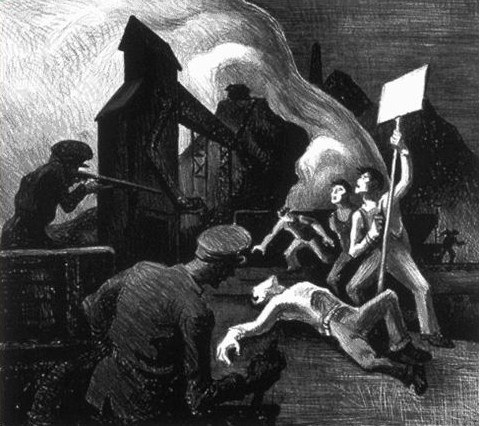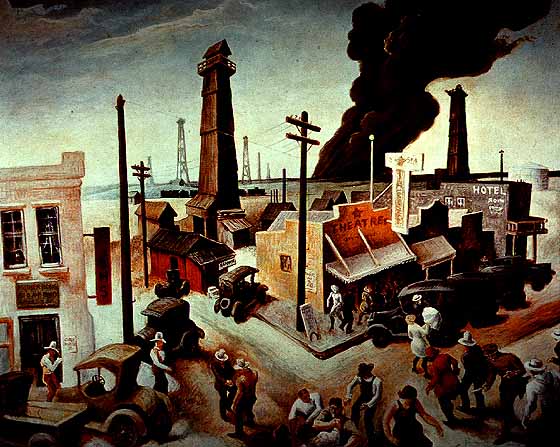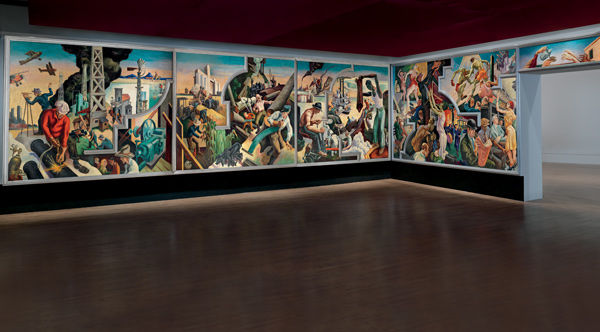General Discussion
Related: Editorials & Other Articles, Issue Forums, Alliance Forums, Region ForumsWPA Depression Art
in honor of Labor Day, is a collection of paintings and prints from the Great Depression. Images from the gorgeous to the grim, all fascinating.
The Depression was characterized by unemployment, homelessness, hunger, bankruptcies, home foreclosures, dust, drought, and inequality in the distribution of wealth. And the infrastructure was crumbling. Sound familiar



More at:
https://whowhatwhy.org/2017/09/04/labor-day-paintings-great-depression-wpa/
MineralMan
(146,262 posts)in North St. Paul, MN. It's the post office that's closest to me, so I see it frequently.

dixiegrrrrl
(60,010 posts)and it looks very similar.
wonder if same artist did it.
Your pic seems to show the same size wall as ours.
irisblue
(32,931 posts)packman
(16,296 posts)The Homestead Strike, also known as the Homestead Steel Strike, Pinkerton Rebellion, or Homestead Massacre, was an industrial lockout and strike which began on June 30, 1892, culminating in a battle between strikers and private security agents on July 6, 1892.[3] The battle was one of the most serious disputes in U.S. labor history, third behind the Ludlow Massacre and the Battle of Blair Mountain. The dispute occurred at the Homestead Steel Works in the Pittsburgh area town of Homestead, Pennsylvania, between the Amalgamated Association of Iron and Steel Workers (the AA) and the Carnegie Steel Company. The final result was a major defeat for the union and a setback for their efforts to unionize steelworkers

cyclonefence
(4,483 posts)The WPA is responsible for much public art--murals, stonework--that is all around us but often not identified as such, and a lot of it is endangered when public spaces are renovated or razed. In Harrisburg PA there was a swimming pool at the YMCA tiled with wonderful mosaics of sea life created by artisans supported by the WPA; I've been unable to find any reference to it online, and I'm afraid it may be gone. These works deserve our respect and protection, not just as works of art but as tributes to our country's resilience in the face of disaster.
SharonClark
(10,014 posts)(and most beautiful building in Des Moines) has a room of impressive original WPA murals called "A Social History of Des Moines". It includes the nebula and glaciers, the mistreatment of Native Americans, and the New Deal. There is no way it would be painted today.
https://dsmpublicartfoundation.org/public-artwork/a-social-history-of-des-moines/
MLAA
(17,251 posts)Princess Turandot
(4,787 posts)Within the mural’s 10 panel paintings, Benton created a sweeping panorama of one of the most fascinating periods in world history, capturing the neon excitement of 1920s life in New York City, the promise and the threat of industrial society, women’s emerging liberation, the rhythmic pulse of the Jazz Age, and the advent of the Great Depression.
...
The story of America Today began in 1930 with its original commission by Alvin Johnson, head of the New School for Social Research in Manhattan. In 1983, after 50 years of gracing the boardroom of the New School, the 10 panel mural faced a sale at auction and the risk of permanent dismantling. In February 1984, convinced by the efforts of Mayor Edward Koch and other civic and cultural leaders, AXA Equitable’s then President and CEO John Carter acquired the mural to ensure that America Today was kept intact and resident in New York City.
https://us.axa.com/about-axa/benton-sponsor-statement.html
After an extensive restoration of the panels, AXA Equitable installed them in the lobby of their new Equitable Center complex, which was open to the public. In 2012, AXA Equitable donated the mural panels to the Metropolitan Museum of Art. The Met installed the 10 panels on all four walls of one gallery in its American Art wing. End to end, they are over 100 feet in width:

City Building, 1931

Benton's final panel is titled Outreaching Hands. 'He stated that he added this panel at the very end to signify his awareness, which was gradual over the nine-month project, that the economic crash in 1929 and the successive crashes were adding up to something that was much worse than people initially realized.'

Larger versions/longer descriptions of the ten panels are available here: http://www.metmuseum.org/toah/works-of-art/2012.478a-j/